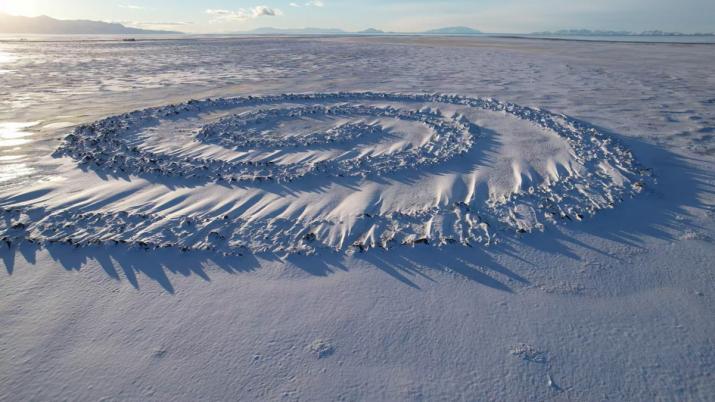

Robert Smithson's "Enantiomorphic Chambers" on view at National Gallery
Robert Smithson's Enantiomorphic Chambers (1965) is on view in the exhibition The Double: Identity and Difference in Art since 1900 at the National Gallery of Art in Washington D.C.
The Double considers "how and why modern and contemporary artists have employed doubled formats to explore perceptual, conceptual, and psychological themes. [...] Through art, The Double explores enduring questions of identity and difference, especially self-identity as defined by our own unconscious, by society, and by race, gender, and sexuality."
In Smithson's 1966 text "Interpolation of the Enantiomorphic Chambers," he explains the concepts that informed the steel and mirror sculpture. Smithson provides a definition of enantiomorphic in relation to binocular vision as:
"Any manifest division between the position of the eyes;
Contrary accommodation and convergence;
Duplex structure of sight as an invention;
Infinite myopia;
Equidistant dislocation."
In an interview with Paul Cummings in 1972 Smithson shared a more transparent definition of enantiomorph in relation to the sculpture:
"...the left and right hand could be considered an enantiomorph. It is a kind of bi-polar notion that comes out of crystal structure. They are two separate things that relate to each other. l would say that in the Enantiomorphic Chambers there is also the indication of a kind of dialectical thinking that would emerge later very strongly in the Nonsites."
The Double: Identity and Difference in Art since 1900 is on view at the National Gallery of Art through October 31, 2022.
Robert Smithson, Enantiomorphic Chambers (1965)
Installation view: The Double, National Gallery of Art, Washington D.C., 2022
Courtesy National Gallery of Art, photograph by Robert Shelley
Artwork © Holt/Smithson Foundation / Licensed by Artists Rights Society, New York





